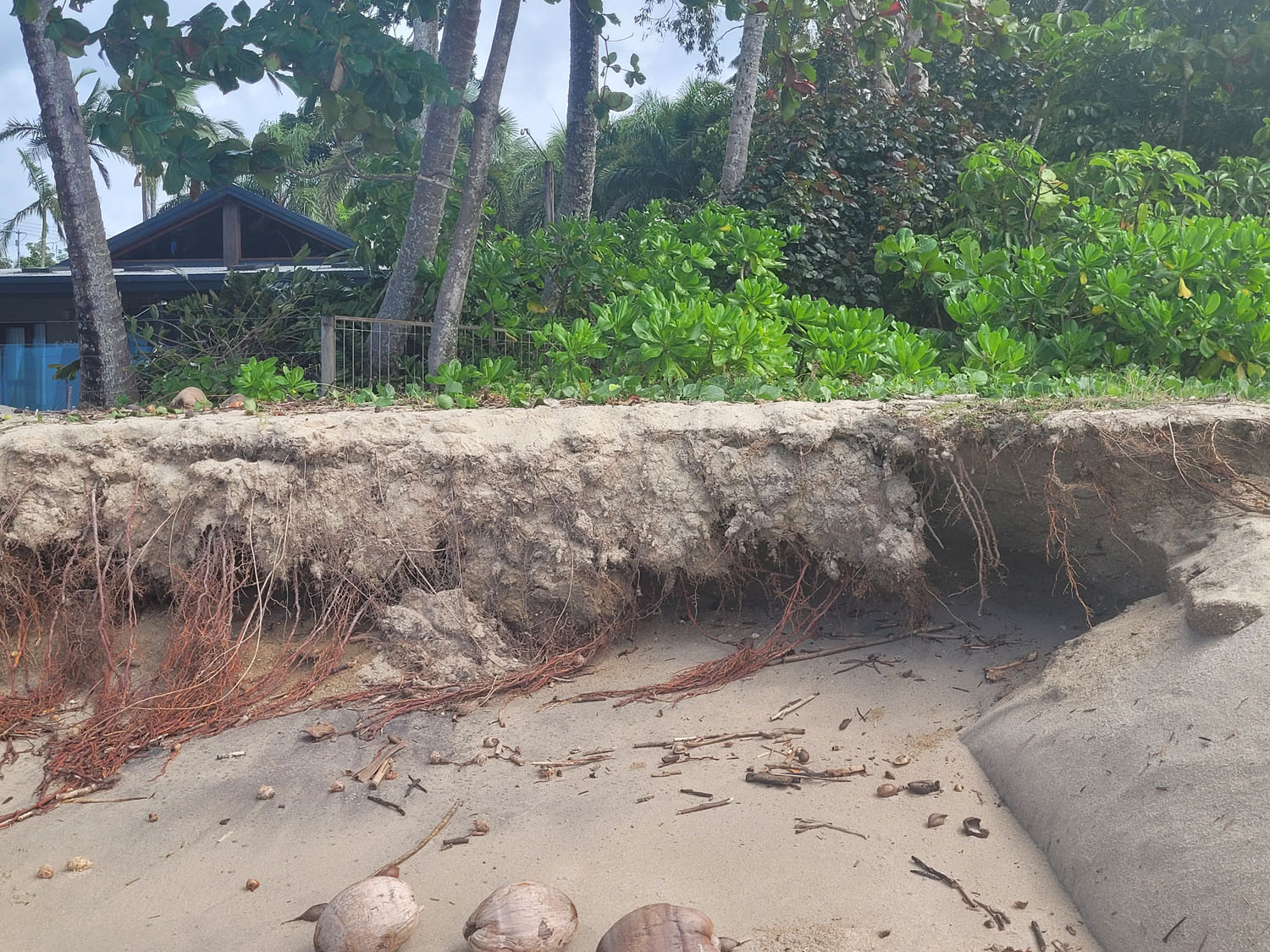General News
22 October, 2025
Shifting sands
NEWELL Beach residents are demanding a long term and sustainable fix to erosion after the failure of a sand replenishment program.

Vicki Thomas went away for two weeks and was shocked to see the sand had disappeared.
“I have been away for two weeks and went down to Newell Beach – where is the sand?,’’ she said.
“Once again the dumping of sand on Newell Beach has washed away within a month. This program of dumping sand on Newell has been a 100% failure over the years.
“Is the sand drifting to Dickson Inlet to be dredged out again?’’
Ms Thomas said she had been hassling Douglas Shire Council about erosion/protection for years “but they really aren’t interested”.
“They dump the sand because they don’t have anywhere else to put it. I remain surprised that the EPA (Environment Protection Agency) support it,” she said.
“The council refuses to show footage of where the sand goes, but another bar is now forming offshore. Very sad for any sea grass.”
Another resident, Lisa McCoy, said Cyclone Jasper erosion at Newell Beach had worsened because “sand dumping hadn’t addressed the real issue”.
“A large sand island that formed at the river’s mouth as a result of the cyclone is blocking natural drift,” she said.
“We’ve got three agencies involved but little coordination or consultation with the residents most affected and all we are asking for is a proper long term-plan before the cyclone season starts again.
“We really want to work together with the responsible organisations to come up with an evidence-based solution.”
One other resident, who asked not to be named, said there had always been a history of minor erosion impacting a small section of beachfront houses, quite close to the high tide mark.

“Historically, this minor erosion is normally addressed annually by the natural flow of long-shore drift which replenishes the beach each season,” he said.
The resident said after Cyclone Jasper’s torrential downpour caused vast volumes of sand to be washed out to the river mouth, the result was large sandbars and the stopping of the natural longshore drift northward – essentially creating an artificial groyne. As a result, high tidal movements began to erode Newell Beach and, in particular, about a 250m section in front of four beachfront houses.
“The beach is palm tree-lined and many of the palm trees were in imminent danger of falling because of the scouring at the base of the palms and along the bank.
“Eventually, the erosion became so bad that septic tanks and infrastructure were threatened and, in September 2024, the council did undertake an urgent beach nourishment program using dredge from the Daintree River to dump sand on to the eroded section of the beach,” the resident said.
“This sand lasted a mere 12 days before it was washed away in high tides and wave turbidity, dragging this new sand out to join up with the sand groynes from the cyclone, only increasing their size and exacerbating the problem further.
“Once again, and only after persistent pressure, the council together with the Department of Transport undertook another beach nourishment program last month, dumping some 30,000 tonnes of sand dredged from Four Mile Beach.

“Only four weeks later, all the sand has once again washed away and the erosion is more pronounced than it was originally back in 2023/24.
“We are grateful to the Douglas council and welcome any intervention, but common sense should have long ago prevailed and a more sustainable and long term solution been implemented, saving wasted dollars and eliminating the anxiety that we are suffering as a result of having our homes potentially inundated with the upcoming cyclone season almost upon us.”
Douglas Shire Mayor Lisa Scomazzon said the council acknowledged the concerns raised “but it is important to clarify that the latest beach nourishment program was undertaken by the Queensland State Government (Department of Transport and Main Roads), not council”.
“Council remains committed to long-term coastal resilience through its Resilient Coast Strategic Plan, which outlines a proactive and science-based approach to managing erosion risks across our coastline,” she said.
“Council will continue to advocate for collaborative efforts with the state government, and engage with residents and relevant stakeholders, to ensure the long-term protection of vulnerable coastal areas.”
Member from Cook David Kempton said he was looking into the issue raised by residents through the media.
He said he would update the community after his discussions.
Read More: Far North

